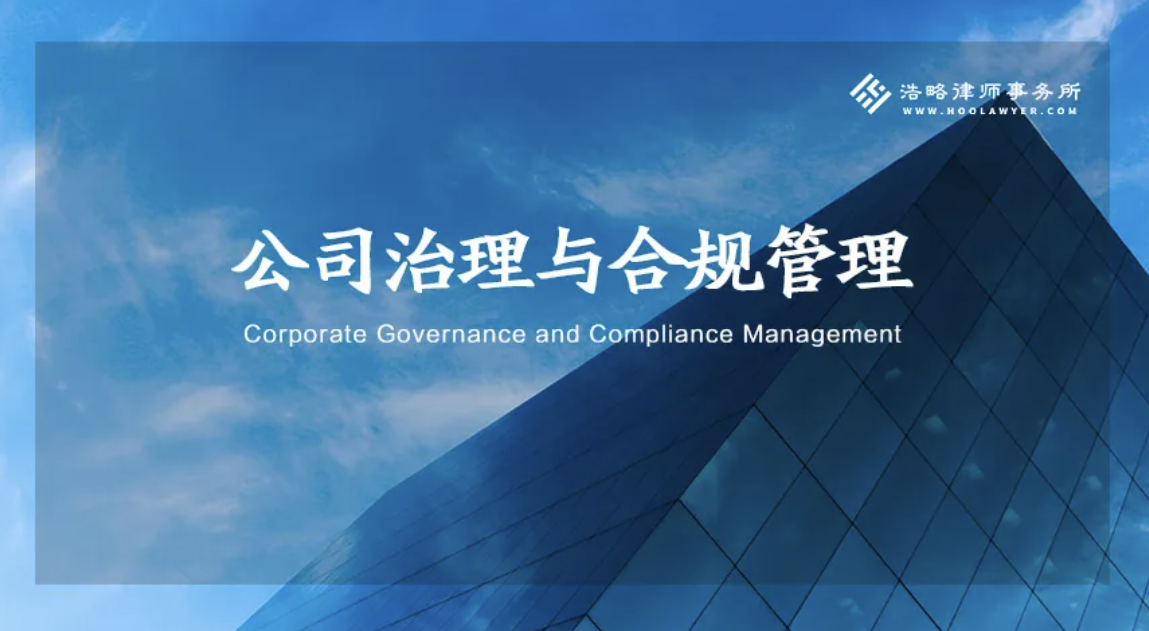I. Historical Evolution
A. Evolution Process
B. Two Types of Situations
1. Bankruptcy Liquidation Status
Article 35 of the Bankruptcy Law stipulates that after the people's court accepts a bankruptcy application, if the contributor of the debtor has not fully fulfilled the capital contribution obligation, the administrator shall require the contributor to pay the subscribed capital contributions, without being restricted by the capital contribution period. The legal rationale is that the capital contribution period of shareholders shall not exceed the company's duration of existence. Once the company goes bankrupt, it is deemed that the capital contribution period stipulated in the articles of association has expired. It should be noted that the capital contributions paid due to the acceleration of maturity will be included in the debtor's property taken over by the administrator and used to repay the claims of all creditors. This indicates that the acceleration of maturity system under the Bankruptcy Law aims to strengthen the debtor's property to ensure that all creditors can be compensated fairly.
2. Non - liquidation Status
Article 6 of the Minutes of the Ninth National Civil and Commercial Trial Work Conference of the Supreme People's Court only stipulates two situations in which the capital contribution period of shareholders is accelerated: (1) In cases where the company is the executed party, after the people's court has exhausted all enforcement measures and there is no property available for execution, and the company has met the bankruptcy criteria but does not apply for bankruptcy; (2) After the company's debt has arisen, the company's shareholders' (general) meeting resolves or otherwise extends the capital contribution period of shareholders. It should be emphasized that the "acceleration of maturity" provision in the Minutes of the Ninth National Civil and Commercial Trial Work Conference has established the "direct repayment" rule, that is, shareholders whose capital contribution period has not arrived shall bear supplementary compensation liability to the creditor for the company's debts that cannot be repaid. In this case, although shareholders contribute capital in advance, they are actually fulfilling the repayment obligation to the creditor rather than paying capital contributions to the company.
Article 54 of the new Company Law further relaxes the conditions for the acceleration of shareholders' capital contribution maturity, allowing shareholders to be required to contribute capital in advance when the company is unable to pay its matured debts, without the need to meet the bankruptcy criteria. This provision marks that the acceleration of shareholders' capital contribution maturity system can also be applied in non - bankruptcy dissolution situations, reflecting the improvement of the company's capital system. Essentially, this clause is a legislative confirmation and improvement of the acceleration of shareholders' capital contribution obligation maturity system introduced in Article 6 of the Minutes of the Ninth National Civil and Commercial Trial Work Conference of the Supreme People's Court in 2019. There is a dispute as to whether Article 54 further strengthens the protection of creditors based on the Minutes of the Ninth National Civil and Commercial Trial Work Conference. One view is that literal interpretation should be followed, and shareholders should first pay capital contributions to the company rather than directly to the creditor, that is, the "in - treasury principle" should be applied. Another view is that this principle reduces the efficiency of the acceleration of maturity system and weakens the creditor's willingness to realize their rights, which is inconsistent with the legislative purpose. The author will discuss this in detail later.
II. Theoretical Disputes
Since the reform of the subscribed capital system in 2013, there has been a dispute over whether shareholders can be required to accelerate their subscribed capital contributions when the company is unable to pay its matured debts but does not meet the bankruptcy criteria. Behind this dispute are actually different theoretical viewpoints. Therefore, in order to deeply understand the connotation of the acceleration of shareholders' capital contribution maturity system in Article 54 of the new Company Law, it is necessary to systematically sort out the theoretical disputes behind this issue. There are mainly three viewpoints: the affirmative view, the negative view, and the compromise view.
A. The Affirmative View
1. Nature of the Capital Contribution Period
The capital contribution period is an internal agreement between the shareholder and the company and has no external binding force.
2. Guarantee Liability
The capital contribution commitment made by the shareholder to the company is essentially a guarantee liability for the company's debts. When the company is unable to pay its matured debts, the shareholder should assume this guarantee liability.
3. Survival and Development of the Company
The continuous operation of the company is the fundamental purpose. If the capital contribution period interests of shareholders are absolutely protected, it may lead to shareholders evading debts, which is not conducive to the company's survival.
4. Reducing Creditor Relief Costs
If the acceleration of shareholders' capital contribution maturity is only allowed at the bankruptcy stage, it may force creditors to apply for bankruptcy, thus increasing judicial and litigation costs, which is not in line with the purpose of encouraging the development of the company.
5. Nature of the Capital Contribution Obligation
Under the subscribed capital system, the shareholder's capital contribution obligation is postponed rather than exempted. In special circumstances, acceleration of maturity should be allowed.
6. Scope of Liability
The company shall bear debts to the outside with all its property, including the existing property and the capital contributions promised by shareholders.
B. The Negative View
1. Legitimacy of the Period Interest
The capital contribution period interest enjoyed by shareholders is a legal right. Requiring shareholders whose capital contribution period has not expired to contribute capital in advance lacks a legal basis, breaks through the subscribed capital system, and increases the personal liability of shareholders.
2. Assumption of Business Risks
When conducting transactions with the company, the creditor is aware of the company's registration information and the shareholder's capital contribution period and should bear the relevant business risks on their own.
3. Application Limitation
Paragraph 2 of Article 13 of the Interpretation of the Supreme People's Court on Several Issues Concerning the Application of the Company Law of the People's Republic of China (III) should be applicable to the situation where the capital contribution period has expired but the capital contribution is not fully made, and the application should be narrowly interpreted.
4. Issue of Individual Liquidation
If individual creditors are allowed to request shareholders to perform their capital contribution obligations in advance, it will damage the interests of other creditors.
C. The Compromise View
The compromise view holds that in non - bankruptcy situations, it should be determined whether to accelerate the maturity according to specific circumstances:
1. Business Difficulty Theory
When the company faces serious business difficulties, the obligation of shareholders to accelerate capital contribution should be recognized, and shareholders who have not fully contributed capital should be required to bear supplementary liability.
2. Creditor Classification Theory
Creditors are divided into voluntary and involuntary types. Voluntary creditors should be aware of the company's assets and capital contribution situation and should bear the transaction risks arising therefrom; while involuntary creditors should have the right to request shareholders to accelerate capital contribution.
Before the introduction of the new Company Law, the affirmative view was dominant in the theoretical circle, but the practical sector was more cautious and mostly adopted the negative view. It can be seen that the dispute over the acceleration of shareholders' capital contribution obligation maturity is ostensibly a matter of norm selection, but essentially involves how to balance the interests of creditors, shareholders, and the company. The position of the new Company Law is that the shareholders' use of the period interest to counter the creditor should have boundaries, and the protection of the shareholders' capital contribution period interest cannot be absolute.
III. Interpretation of the Provisions
A. What Constitutes a Company's Inability to Pay Matured Debts
There is a dispute between the objective standard and the subjective standard regarding whether a company can pay its matured debts: The objective standard is based on the order of liability assumption. That is, as the real debtor, the company should assume the debt in the first place, and the non - contributing shareholders are only in a supplementary position. Only when the company objectively lacks the ability to pay off the creditor's debt due to lack of solvency can the company or the creditor claim the acceleration of maturity. The subjective standard holds that as long as the company fails to pay the debt, the acceleration of shareholders' capital contribution maturity can be claimed, without distinguishing whether the company has the solvency but is unwilling to pay or is unable to pay due to objective insolvency. In this regard, this article believes that the historical evolution of the acceleration of shareholders' capital contribution maturity provisions in the new Company Law reflects a lenient tendency, and the subjective standard should be adopted. Further analysis shows that "a company's inability to pay matured debts" should be understood as "cessation of payment" in theory, that is, the company objectively has matured debts and actually fails to pay them, which constitutes "inability to pay matured debts." It is the objective time point when the debt matures naturally and does not require the company to receive a final ruling or other forms of legal confirmation as a prerequisite.
B. Legal Effects
Regarding the legal effects of Article 54 of the new Company Law, first, there is a dispute between the "in - treasury rule" and the "restrictive non - in - treasury rule," which has led to a certain degree of disconnection between theory and practice. The view supporting the "in - treasury rule" holds that the legal consequence of the acceleration of shareholders' capital contribution maturity should be to pay capital contributions to the company. The shareholders' capital contributions, as the company's liability property, are used by the company to pay off the creditors to ensure that all creditors are compensated fairly. Opponents, proceeding from implementation efficiency, believe that for the company's debts that cannot be paid, within the scope of the accelerated capital contribution maturity, the shareholders should directly pay off the creditors to avoid the additional litigation costs of the company's creditors first filing a subrogation lawsuit to require the shareholders' capital contributions to be included in the company and then suing the company for repayment. The core of this dispute lies in how to coordinate the interests of the company and its creditors. This article believes that the "in - treasury rule" should be adopted. When applying Article 54 of the new Company Law, the creditor's subrogation right rule should not be simply applied in pursuit of efficiency, because the shareholders' capital contributions to the company not only serve as a guarantee for external debts but also promote the company's business development. If creditors are allowed to randomly require shareholders to assume repayment responsibilities, it will weaken the multiple values of shareholders' capital contributions and may undermine the company's independent personality. In addition, in the case of the company facing an invisible bankruptcy situation of "inability to pay matured debts," the "restrictive non - in - treasury rule" may lead to individual liquidation, unable to achieve fair compensation for all creditors, and trigger litigation races.
Secondly, the new Company Law does not clearly stipulate the amount of the acceleration of shareholders' capital contribution maturity. This article believes that although the acceleration of shareholders' capital contribution maturity has become the norm under the new law, the protection of shareholders' capital contribution period can only be broken when the company is unable to pay its matured debts. Therefore, if the company claims the acceleration of maturity, the amount of shareholders' capital contributions should be limited to the matured debts that the company cannot pay; if the creditor claims it, it should be limited to its claim against the company; if multiple shareholders are involved, based on the principle of shareholder equality, each shareholder should pay the capital contribution in advance according to the proportion of their capital contributions.
IV. Creditors' Rights - safeguarding Paths
A. Three Paths
In previous judicial practice, different courts have different procedural requirements for creditors to hold shareholders accountable, which can be mainly divided into the following three situations:
1. Applying to Add Shareholders as Executed Parties after Receiving a Final Ruling
After the creditor wins the basic lawsuit against the company, if the company fails to pay the debt and is ruled to end the execution, the creditor can apply to add shareholders who have not fulfilled or have not fully fulfilled their capital contribution obligations as executed parties. However, some courts believe that adding shareholders involves their important rights and obligations and should go through substantive trial rather than being directly handled through the execution procedure, so they reject the application. If the application is rejected, the creditor can file a lawsuit against the execution objection. Although creditors can hold shareholders accountable in this way, due to the possible need to further file an objection lawsuit, the rights - safeguarding cycle and cost are relatively high.
2. Separately Suing Shareholders after Receiving a Final Ruling
After receiving the final ruling, the creditor can also directly file a "lawsuit for damage to the creditor's interests" against the shareholders as defendants, requiring the shareholders to bear supplementary liability for the company's debts within the scope of their unpaid capital contributions. In this case, the lawsuit for damage to the creditor's interests is parallel to the basic lawsuit, and the two are tried under separate case numbers. Although this path can hold shareholders accountable, the basic lawsuit and the lawsuit for damage to the creditor's interests may be tried in different courts, increasing the complexity and difficulty of rights - safeguarding.
3. Listing Shareholders as Defendants in the Basic Lawsuit
To overcome the shortcomings of the first two methods, the creditor can sue the company and the shareholders in the same case, requiring the company to repay the debt and the shareholders to bear supplementary compensation liability. This method allows the court to review the basic legal relationship between the company and the creditor, as well as whether the shareholders have fulfilled their capital contribution obligations. This path can reduce the litigation process, avoid procedural repetition, save the creditor's rights - safeguarding costs, and at the same time help the court resolve the dispute at one time, which has obvious advantages compared with the first two paths.
B. Creditors' Initial Burden of Proof
It should be noted that when suing shareholders based on Article 54, the creditor should provide preliminary evidence to prove that the shareholders have not actually paid their capital contributions to ensure that the shareholders meet the conditions of a proper defendant. In practice, the creditor can use the company's industrial and commercial publicity information (such as the enterprise annual report) and internal industrial and commercial files and other evidence (for example, the internal industrial and commercial files show that the shareholder has not completed the actual capital contribution) to preliminarily prove that the shareholder has not fulfilled the capital contribution obligation.
To sum up, this article believes that when the company has outstanding matured debts and the creditor can provide preliminary evidence to prove that the shareholder has not fully paid the capital contributions in kind, the creditor can sue the shareholder together and has the right to directly request compensation. Of course, if after trial, it is found that the claim in the basic legal relationship cannot be supported, there is no need to continue to hear the capital contribution relationship between the shareholder and the company.
V. Practical Suggestions
As mentioned above, after the implementation of Article 54 of the new Company Law, the dispute over whether the shareholders' capital contribution should be accelerated may have subsided, but there are still many disputes regarding the specific application of this article. Nevertheless, different stakeholders involved in this system still need to pay attention to the application of this norm. Therefore, this article puts forward the following suggestions:
A. For the Company
If the company is unable to pay its matured debts, it should promptly require shareholders whose capital contribution period has not expired to pay their capital contributions in accordance with Article 54 of the new Company Law.
B. For the Company's Creditors
When using the acceleration of shareholders' capital contribution maturity system, creditors should promptly apply to freeze the company's accounts and the company's capital contribution claims against shareholders. During the litigation stage, creditors should request the company to repay the debt and require shareholders to pay capital contributions to the company. After obtaining a favorable judgment, the capital contributions paid by shareholders will enter the company's account, thereby realizing the claim.
C. For the Company's Shareholders
In the absence of clear regulations, "the company's inability to pay matured debts" may provide a basis for shareholders to defend, allowing them to temporarily exempt from the obligation of accelerating the maturity of capital contributions by proving that the company has the solvency. For example, shareholders can provide the company's balance sheet, audit report, or asset appraisal report to prove that the company's assets are greater than its liabilities; or provide effective judgments, contracts, and other evidence to prove that the company is still in continuous operation and has expected earnings.
Through the above suggestions, all parties can more effectively respond to the changes brought about by Article 54 of the new Company Law.
Conclusion
Overall, the introduction of the acceleration of shareholders' capital contribution maturity system in the new Company Law provides a new legal tool for protecting the rights and interests of creditors, but its implementation still faces many challenges. How to reasonably understand and apply this system will directly affect the corporate governance structure and the rights and interests of all parties. In the future, further judicial interpretations and practical explorations are needed to improve this system, so that it can effectively protect the interests of creditors without harming the legitimate rights and interests of shareholders, thereby promoting the healthy development of enterprises.
References
Compiled by the Second Civil Tribunal of the Supreme People's Court: Understanding and Application of the Minutes of the National Civil and Commercial Trial Work Conference of the Supreme People's Court, People's Court Press, 2019, pp. 123 - 124.
Li Jianwei: Commentary on the Company Law, Law Press, 2024, p. 234.
See Liu Bin: "An Interpretation of the Rule of Accelerating the Maturity of Capital Contribution Obligations", Journal of Finance and Economics Law, No. 3, 2024.
See Duan Lingyun: Research on the Acceleration of Shareholders' Capital Contribution Maturity System in the New Company Law.
See: Understanding and Application of the Judicial Interpretation of the Enterprise Bankruptcy Law of the People's Republic of China (I) and (II), People's Court Press, 2013, p. 62.
Zhang Zheng et al. Is There a Ray of Hope for Creditors? - A Discussion on How Creditors Skillfully Use the Acceleration of Maturity System under the New Company



























.png)
.png)







